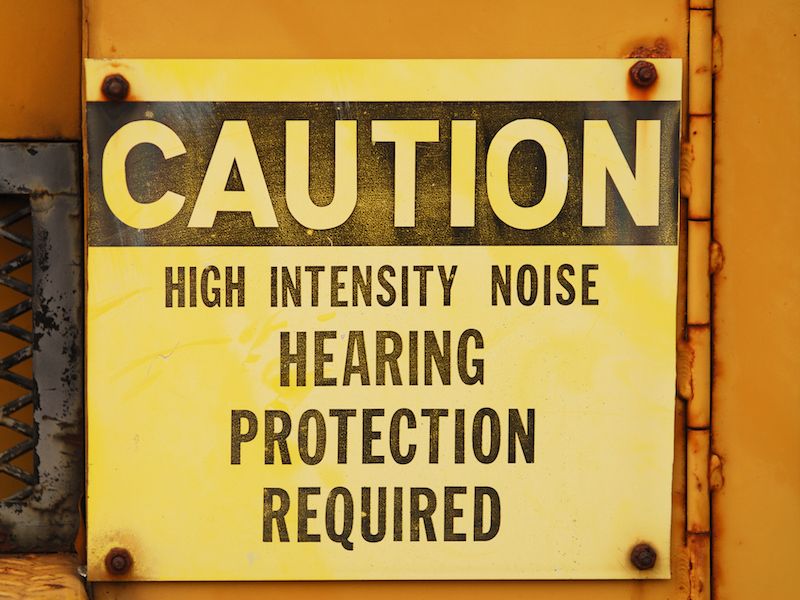
Knowing you should protect your hearing is one thing. It’s another matter to know when to safeguard your ears. It’s more difficult than, let’s say, knowing when you need sunscreen. (Are you going to go outdoors? Is the sun out? You need to be using sunscreen.) It’s not even as easy as knowing when to wear eye protection (Using a hammer? Working with a saw or dangerous chemicals? Use eye protection).
When dealing with when to wear hearing protection, there seems to be a big grey area which can be risky. Frequently, we’ll defer to our natural inclination to avoid hearing protection unless we have information that a particular activity or place is dangerous.
Risk Assessments
In general, we’re not very good at assessing risk, especially when it comes to something as intangible as damage to the ears or the possibility of lasting sensorineural hearing loss. To prove the point, check out some examples:
- Person A goes to a very loud rock concert. The concert lasts approximately 3 hours.
- A landscaping business is run by person B. She spends a significant amount of time mowing lawns, then she goes home to a quiet house and reads a book.
- Person C is an office worker.
You may think the hearing hazard is greater for person A (let’s just call her Ann). For most of the next day, her ears will still be screeching from the loud performance. It seems reasonable to assume that Ann’s recreation was quite risky.
The noise that person B (let’s just call her Betty), is subjected to is not as loud. There’s no ringing in her ears. So it must be less hazardous for her hearing, right? Not necessarily. Because Betty is mowing all day. So even though her ears don’t ring out with pain, the harm builds up slowly. If experienced on a regular basis, even moderately loud noise can have a negative affect on your hearing.
What’s happening with person C (let’s call her Chris) is even tougher to sort out. Lawnmowers come with instructions that point out the risks of ongoing exposure to noise. But while Chris works in a quiet office, she has a really noisy, hour-long commute each day through the city. Also, although she works at her desk all day, she listens to her music through earbuds. Is protection something she should think about?
When is it Time to Start Thinking About Protecting Your Hearing?
Generally speaking, you need to turn down the volume if you have to shout to be heard. And you should think about wearing earplugs or earmuffs if your surroundings are that noisy.
If you want to think about this a bit more clinically, you need to use 85dB as your cutoff. Sounds above 85dB have the potential, over time, to cause injury, so in those circumstances, you need to consider wearing hearing protection.
Your ears don’t have their own sound level meter to notify you when you reach that 85dB level, so most hearing professionals suggest getting specialized apps for your phone. You will be able to take the necessary steps to safeguard your hearing because these apps will inform you when the noise is reaching a hazardous level.
A Few Examples
Your phone might not be with you wherever you go even if you do download the app. So a few examples of when to safeguard your ears may help you formulate a good standard. Here we go:
- Using Power Tools: You recognize that working all day at your factory job is going to require hearing protection. But what if you’re simply puttering around your garage all day? Even if it’s only a hobby, hearing specialists suggest using hearing protection if you’re using power equipment.
- Listening to music with earbuds. This one requires caution, not protection. Whether your music is playing directly into your ears, how loud it is playing, and how long you’re listening to it are all things you should pay attention to. Noise-canceling headphones are a great choice to prevent having to turn the volume way up.
- Driving & Commuting: Spending all day as an Uber or Lyft driver? Or maybe you’re taking the subway after waiting for a while downtown. The constant noise of city living, when experienced for between 6 and 8 hours a day, can cause damage to your ears over the long haul, particularly if you’re cranking up your music to hear it over the commotion.
- Every day Chores: We already talked about how something as basic as mowing the lawn, when done frequently, can call for hearing protection. Chores, like mowing, are probably something you don’t even think about, but they can lead to hearing damage.
- Exercise: Your morning spin class is a good example. Or perhaps your daily elliptical session. Each of these examples could require hearing protection. The loud volume from trainers who play loud music and microphones for motivation, though it may be good for your heart rate, can be bad for your hearing.
These illustrations may give you a suitable baseline. When in doubt, however, you should defer to protection. Instead of leaving your ears exposed to future harm, in most situations, it’s better to protect your ears. Protect today, hear tomorrow.
